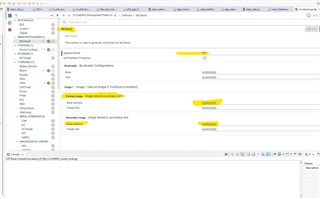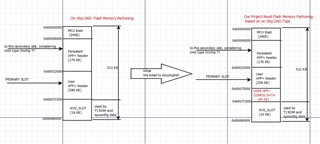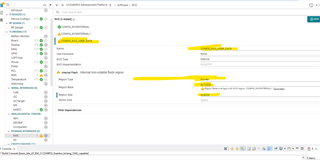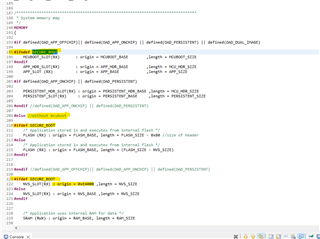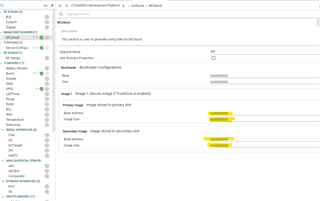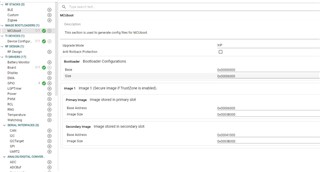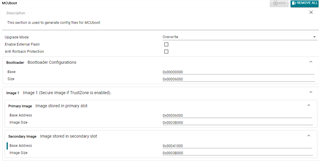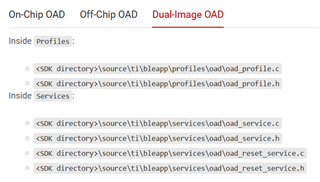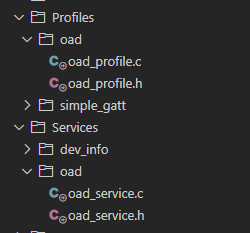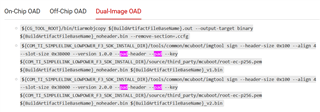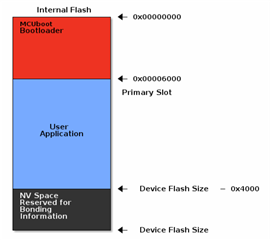Other Parts Discussed in Thread: SYSCONFIG, CC2340R5
Tool/software:
I remember during TI CC2340R53 workshop while demonstrating BLE OAD , they used the following bootloader binaries from SDK/examples/rtos/LP_EM_CC2340R53/ble5stack/hexfiles as shown below.
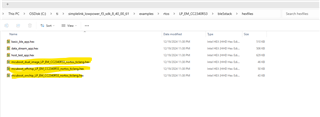
Only hex files are shared, where we can get the source code to generate mcuboot_dual_image_LP_EM_CC2340R53_nortos_ticlang.hex , mcuboot_offchip_LP_EM_CC2340R53_nortos_ticlang.hex and mcuboot_onchip_LP_EM_CC2340R53_nortos_ticlang.hex .
If the same example code "mcuboot_LP_EM_CC2340R53_nortos_ticlang" is used then can you provide the corresponding configurations settings to do generate mcuboot_dual_image_LP_EM_CC2340R53_nortos_ticlang.hex , mcuboot_offchip_LP_EM_CC2340R53_nortos_ticlang.hex and mcuboot_onchip_LP_EM_CC2340R53_nortos_ticlang.hex .
With Regards
Ilanchezhian T


